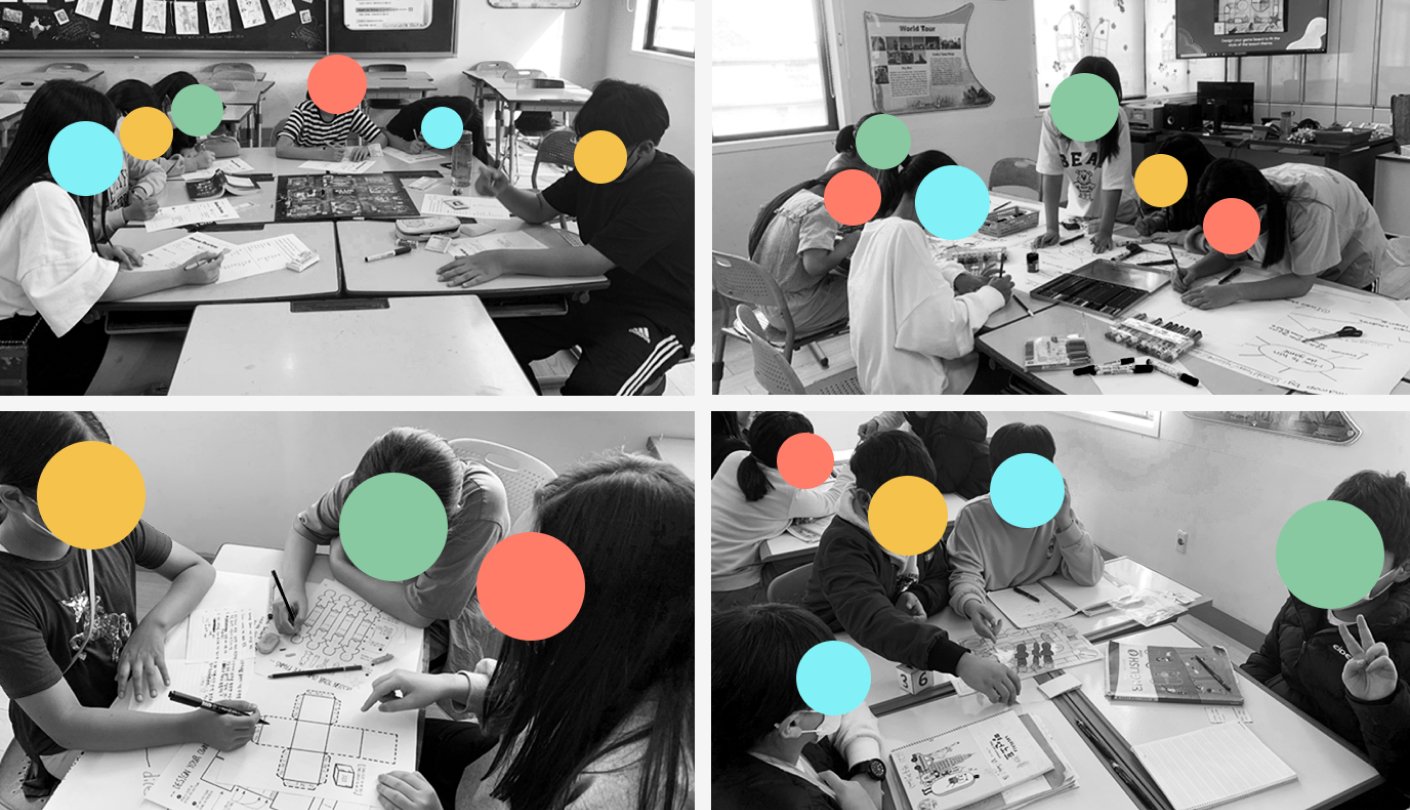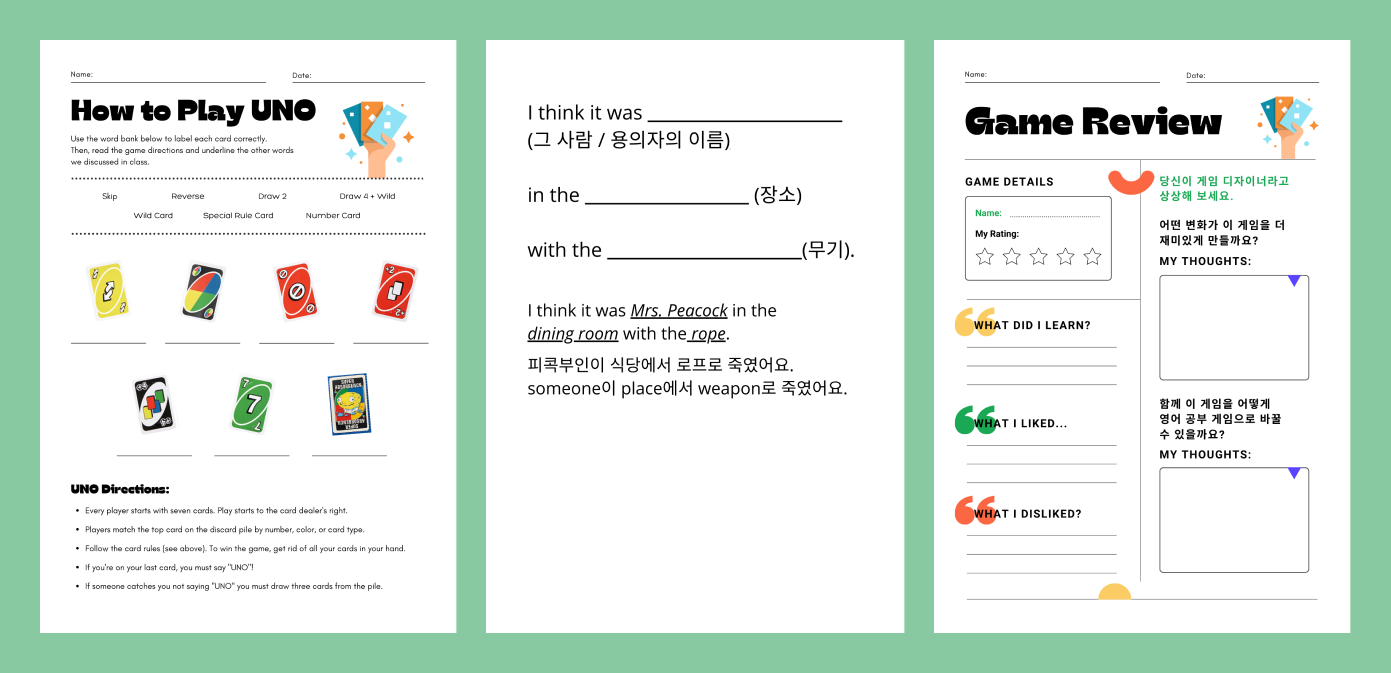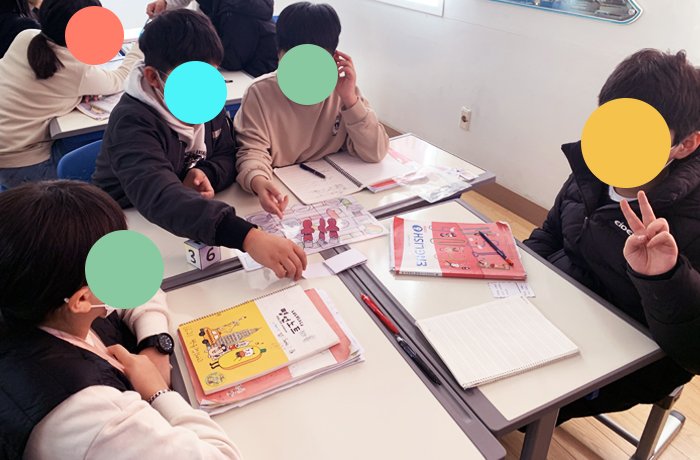Lesson Objective
Club students design and build a board game to help their fellow sixth-grade classmates study past English lessons.
Curriculum Overview
Students design and role-play a cooking show in order to learn common cooking vocabulary and phrases.
I made a rough curriculum plan knowing things could change week to week based on my students’ progress. However, every week, I made a detailed lesson plan.
The original lesson and game pieces were created and designed by Prince Padania and purchased and modified for my lesson.
Role
ESL English Teacher
Grade / Level
Elementary, Grade 6
Art Express English Club
Low-High Beginner ESL
Lesson Idea Modified From
Prince Padania
Lesson Timeline
September - November 2021
(10 weeks)
Design Thinking
The goal was to get students to use design thinking methods and work through the design process as they made their board games.
Phase 1: Research
Students researched and played American games, learned vocabulary and new game rules.
Phase 2: Ideate
Students worked in teams to ideate game themes, layouts, and instructions.
Phase 3: Prototype
Game cards, boards, and tokens were prototyped and designed.
Phase 4: Test
The game was tested with the club members, and later played and tested for class feedback.
Examples of my detailed lesson plans. Each week, I would create a detailed version of my plans to help class time run smoothly.
Research = Play
According to Albert Einstein, “Play is the deepest form of research.” To learn new vocabulary in English, my club students played a few different American board and card games. We learned game vocabulary and rules, and reflected on what made the game fun and successful after playing.
“I think it was _____ (용의자의 이름) in the _______ (방 이름 / 장소) with the ______ (무기).”
Worksheets and Game Reflections
Before each game new vocabulary and rules were taught. Worksheets were given to help recall and memorize what was learned. Teaching aids were provided during the game for trickier English sentences and vocabulary. At the end of each game, students were asked to reflect on what they learned, liked, disliked, and what they could improve or use when making their own game boards.
Ideating and Prototyping
After our research stage, my students collectively brainstormed and mind-mapped game themes, rules, and ideas before spending the next few weeks implementing our designs into prototypes. Before the students played their game with the rest of their sixth-grade classmates, they played a test round, and filmed how-to-play videos.
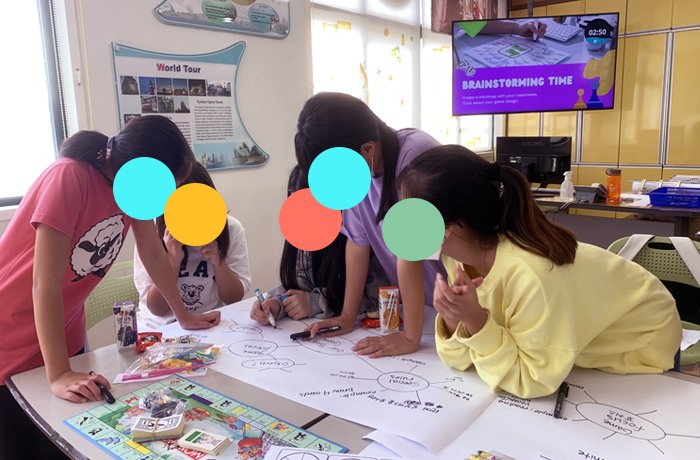
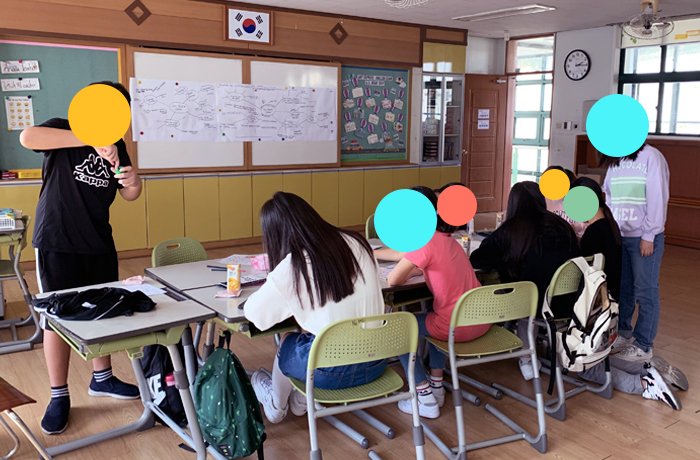
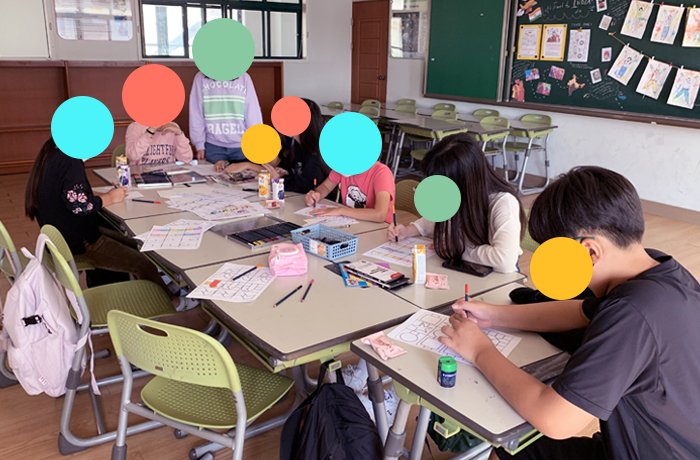
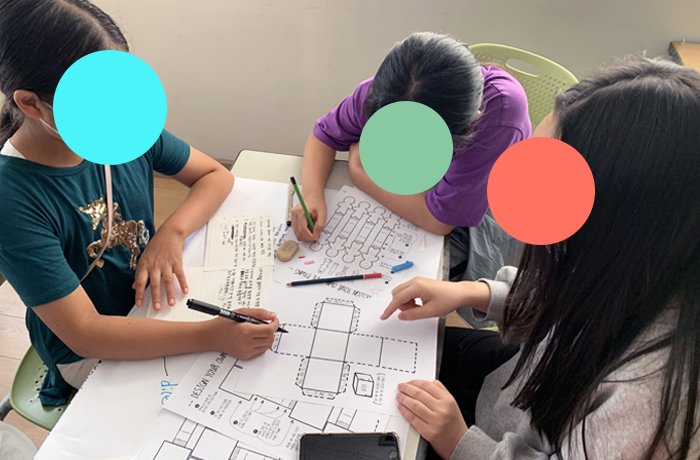
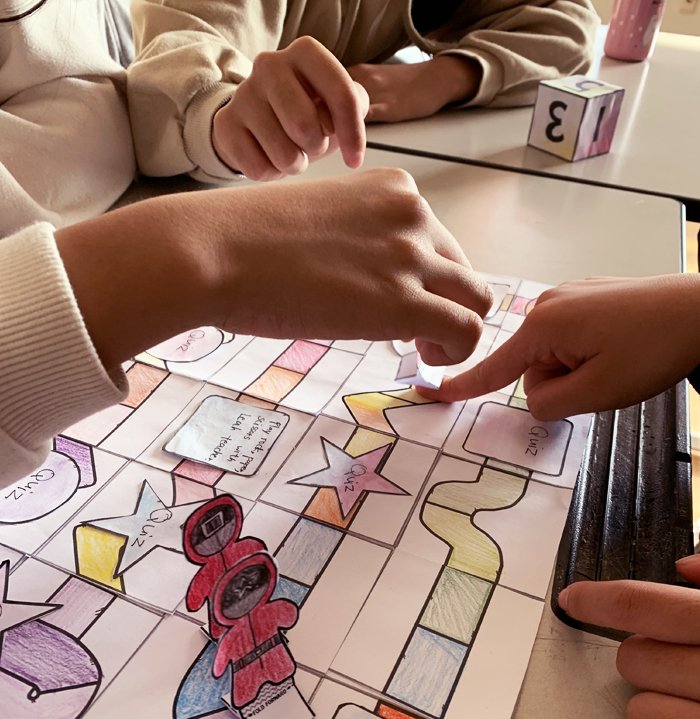
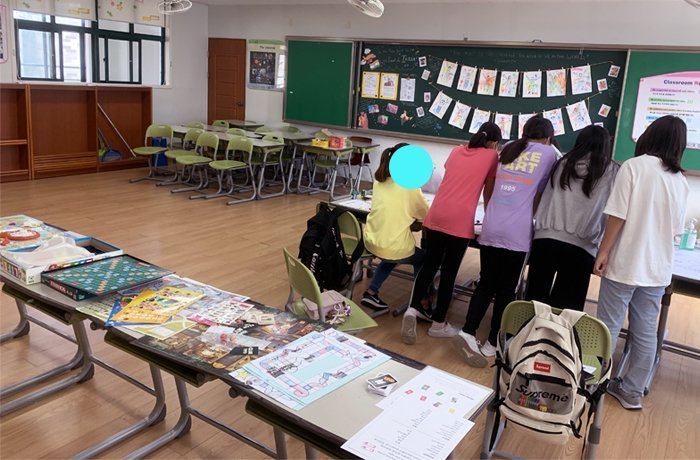

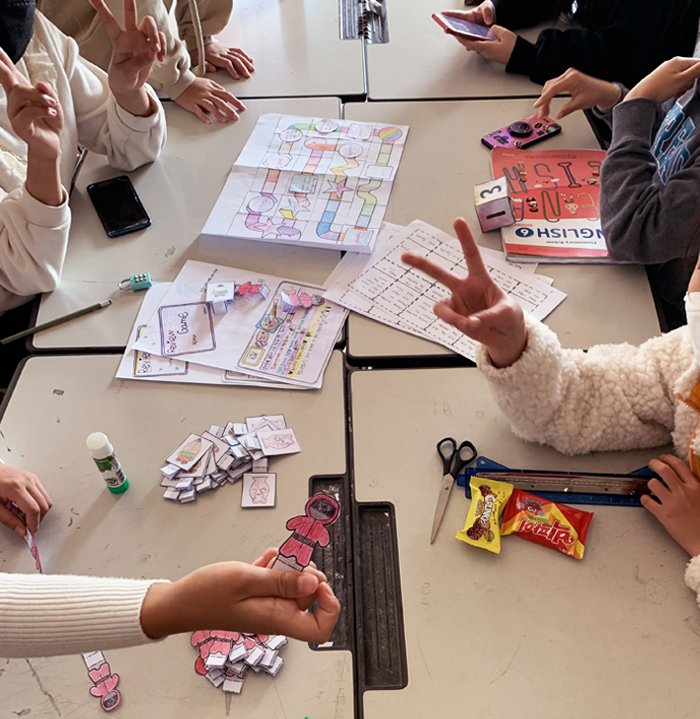
Playing and Testing the Game
It’s Game Time!
The final result of the project was a board game that my club students tested and played with the rest of their sixth-grade classmates during regular class time.
Before letting the students play the game, we learned about design thinking. This primer into the activity helped non-club students understand how the board game was designed and made. They started thinking like designers and feeling less shy about providing helpful and constructive feedback.
At the end of the game and lesson, all students took a feedback survey about the board game, which my club students later reflected on.
Key Takeaways
TAKEAWAY 1
Invest in More Research
Plan extra time in the research phase for students to test out more games and better understand various types of games, rules, etc.
TAKEAWAY 2
Good Directions = Successful Outcomes
Provide more direction around writing the game’s question cards and game rules. Have students understand what is a successful question to ask for gameplay, and what might be too hard or confusing for others to answer. Let them modify directly from the textbook. If it ain’t broke, don’t fix it!
TAKEAWAY 3
Test Your Ideas
Allow students more game-testing time and allow them to incorporate these changes.

